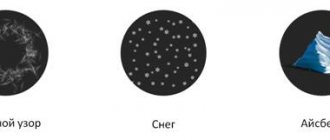Summary of class hour “The world of my hobbies”
Cool hour-conversation “The world of my hobbies” 2-4 grades
Perminova Elena Mikhailovna,
primary school teacher, Municipal Educational Institution "Chekanskaya Agrarian Secondary School"
Target:
- Broaden children's horizons, create positive motivation for self-development;
- Encourage participation in various circles, sections, to develop your abilities and talents;
- Introduce children to the hobbies of famous people and their peers.
- To develop an understanding of the value of every person
- Be able to listen to each other
Preparation:
Children are informed in advance about this class hour and are given the task: to present their hobby, collection, and arrange an exhibition in the classroom. You can invite children to bring crafts, collections, and photographs of pets.
Equipment:
multimedia presentation, projector, interactive whiteboard.
Decor:
an exhibition with students’ works, a poster with the inscription “The World of My Hobbies”, an exhibition of drawings.
Class plan
- Organization of class hours (in the classroom, study tables are placed around the perimeter of the classroom where students will sit, near the blackboard, on which an exhibition will be presented - a collection of student works)
- Teacher's opening speech.
- A message about the hobbies of great people.
- Voice-over of the exhibition (students’ stories about their hobbies)
- Collecting (words written on the board, analysis of their meaning)
- Discussion of harmful hobbies.
- Summing up (reflection)
- Final words from the teacher.
Progress of the conversation
-Good afternoon guys! Slide No. 1
-There is sun in nature. It loves and warms us all. So let every ray of it look into our classroom and not only warm you with its warmth, but also add a good mood. And to do this, you need to sit up straight, smile at your neighbor at your desk, smile at the teacher and start the class hour with a smile. You have chosen the topic for the conversation “The world of my hobbies”
Let’s start the conversation with the words “I love what I do, and I do what I love...” Slide No. 2
- Introduction.
Every person has a passion in their life.
People draw, sing, collect stamps, sit for hours at the computer, raise fish or listen to music, read or grow cacti. Hobby can be replaced with another word - a synonym, try to figure it out. Slide No. 3
Slide No. 4
By the way, the word “hobby” has a rather interesting history. Many believe that it comes from the English language, but its roots are German. This is what peasants called a children's toy horse in the 18th century. But the word “hobby” owes its modern meaning to the English writer Laurence Sterne, who at the end of the 18th century published his novel “The Life and Opinions of Tristam Shandy.” It was there that the word “hobby” was used to mean “passion.”
In every person’s life there is a hobby that helps brighten up the difficult moments of life, brings them closer to the world of science, art, nature, the world of people, and helps to find the meaning of life. Hobby brings neither money nor fame. This is an activity for the soul.
2. A journey into the world of hobbies. Slide number 5.
It’s human nature to get carried away, because there are so many interesting things in the world! So we begin our journey into the world of hobbies. Many great people have had hobbies.
3. A message about the hobbies of great people.
Slide number 6.
Peter I
was a passionate numismatist.
He collected a large number of coins (numismatist)
on the board.
Slide number 7.
Some people became famous precisely for their hobbies.
For example, the excellent doctor Vladimir Ivanovich Dal
loved to collect Russian words, proverbs, sayings, and fairy tales. And he became famous for his explanatory dictionary, which is now known to everyone as Dahl’s dictionary.
Slide number 8.
And for some great people, their hobby has become a profession.
The famous female mathematician Sofya Kovalevskaya
has been fascinated by formulas and numbers since childhood. In the house where Sofya Kovalevskaya lived, one wall was covered with sheets of lectures by Professor Ostrogradsky on differential and integral calculus. The sheets with formulas attracted the attention of a curious girl. She stood for a long time and tried to make out at least individual phrases. The appearance of many formulas was firmly etched in the memory of a small child, although their meaning was not yet clear to an 8-year-old girl. However, a little later, Sophia developed a focused interest in mathematics.
Slide No. 9. A.S. Pushkin.
Slide number 10.
Leonid Yakubovich
became fascinated by the sky
.
After a television show where stars were asked to fly airplanes, he cannot deny himself the pleasure of sitting at the controls of an airplane.
Slide 11-12.
singer and presenter Valdis Pelsh
is also fascinated by the sky, but he loves skydiving. He has an unusual hobby - collecting military helmets. Outstanding items in his collection are the ceremonial helmet of an officer in Napoleon's army and a 19th-century German helmet.
Slide 13-14
The first page is
the country of collectors.
What else can you collect - collect.
— What does collecting give people? (
A person learns about countries, about the history of things, fills his free time, meets collectors)
Slide 15-16.
phylumeny, phylatocarty, phylatoly.
Slide 17-19. Arnold Schwarzenegger
collected a whole fleet of Hummer cars, and even has a real tank in his collection.
Demmy Moor
a passionate collector of rare dolls - she now has more than 3 thousand copies in her assets.
Nadezhda Babkina
loves her collection of elephant figurines. They say that the singer has them all over the place - at home, at the dacha, in the theater, and it all started with those that were bought in Africa.
Guys, are there anyone among you who collects anything? Slide 20 Sasha T.
(Children come to the board and talk about their collections) gift stone from Kungur.
Country of Sports
And on our way is the Land of Sports
.
Slide 21 – 22.
Collecting figurines of various animals is a fairly popular hobby of female celebrities.
Thus, figure skating star Irina Slutskaya
collects elephant figurines and soft toys. Sport is of great importance in a person’s life; sport provides an opportunity to maintain and improve health, fosters the will to win, determination, and other good qualities. We have guys who play sports seriously. They want to be strong, dexterous, brave. A healthy mind lives in a healthy body, says a Russian proverb.
Slide 22. V.V. Putin
has a black belt in judo. In 2014, at the opening of the Olympic Games in Sochi, they tested the ski slope together with D. Medvedev.
We have guys who play sports seriously. They want to be strong, dexterous, brave.
Slide 23 - 24. Nastya and Yaroslav
talk about their hobby.
PHYSICAL MINUTE
Slide 25 - 26. Country of nature lovers.
-There is a new country ahead - the Country of nature lovers.
These are the people who love to take care of plants and animals. They have a special hobby because they deal with living beings. All living things require special attention and care, like small children. (Fish, growing indoor plants, floriculture (OAKS)
Slide 27. Country of Art
I invite you to the land of art. Anyone who loves to sing, dance, draw, listen to music. Please tell us about your hobby (dance club, theater group)
Slide 28-29. A country of very skillful hands.
Another country awaits us - the Country of very skillful hands.
This country is inhabited by those who love to sew, knit, and make things. Show yourself. Dear craftsmen, tell us about your hobby!
(Knitting, drawing, ...airplane models) Shemyakina Irina
Now both adults and children are very interested in the origami technique. Let's try to make a heart. Suddenly someone will like this hobby.
Children, under the guidance of a teacher, perform a craft.
—
Guys, the world of hobbies is so large and diverse that you can travel in it for a very long time and find a lot of interesting and useful things.
Do you think there are harmful hobbies in this world?
And how do you feel about people who have become victims of such hobbies? (smoking, alcoholism, drugs. They evoke pity and sympathy because they ruin their lives)
—
Every person is interested in something. If this hobby does not interfere with other people and does not harm the person himself, then it is worthy of respect. In order to find your passion, you need to look deeper into yourself and not be afraid to take the first step: buy the first stamp, compose the first line, throw a loop on a knitting needle, make the first brush stroke. Try to understand what you would like to do, listen patiently to yourself.
3.Game
—
Now we will play the game
“Guess the Hobby” or find a pair
. I say a word or sentence that means some kind of hobby. Whoever answers faster gets this hobby. For each correct answer I give a flag. The winner is the one who has collected more flags, which means more different interesting hobbies.
- A team game in which players use a stick to score a puck into the opponent's goal. (Hockey)
- The type of sport is group hikes aimed at physical training of the body. (Tourism)
- Searching, tracking animals, birds with a gun or camera. (Hunting)
- Fishing rod. (Fishing)
- A team game in which players kick the ball into the opponent's goal. (Football)
- A person who collects stamps (philatelist)
- Coin Collecting (Numismatics)
4. Summing up. (Reflection)
Do you guys think today's conversation was useful for you? How did you feel when you learned about the hobbies of your comrades?
Complete the sentence: - To my surprise.....
-I learned that it is useful......
-It was interesting...
- Instructive for me...
Bottom line.
Class hour is over, let's smile at each other and our guests, give a good mood to ourselves and those around us. Use the knowledge you gained today. I hope some new ideas emerged today. And your life will become interesting, bright and beautiful.
Extracurricular event “The World of My Hobbies”, 7th grade
Author: Sokolovskaya Inna Vladislavovna - teacher of the defense industry, teacher - librarian of the MBOU Tatsinskaya secondary school No. 3. Rostov region
Description of the material: There are so many collections in the world. They collect coins, badges, sewing machines, antique watches, irons, telescopes... But most of all in the world of philatelists are collectors of postage stamps. Why? This begs the answer: collecting stamps is not that difficult. They can be bought in special stores for philatelists, since they are not that expensive, unless, of course, we are talking about the rarest specimens. You can exchange them with friends, fellow collectors. That’s all true, but the main thing, of course, is different. Postage stamps have a special, mesmerizing appeal. How could it be otherwise, if by their nature brands are great travelers. You’ll even envy how much they had to travel, fly, and swim before ending up in a collector’s album. And the names of the countries where some of them were issued sound so exciting and alluring - Costa Rica, Siorra Leone, Trinidad and Tobago, Monaco... In addition, stamps are not just beautiful multi-colored pictures, but truly illustrated and endless encyclopedia. What they don’t talk about. About memorable historical events. About ships of different times. About the animal world of no planet. About great athletes... Therefore, as a rule, collectors collect stamps not all in a row, but on topics that interest them, for example, painting or the history of technology. In a word, collecting stamps is one of the methods of understanding the world. When and why did postage stamps appear? How have they changed over time? Why do some brands become legendary? Which of the great people was fond of stamps?... The library lesson is designed for students in grades 7 - 8. The material can be used in a wide variety of forms. Teacher's choice. Goal: Formation of general cultural competence of students through the perception of literature Objectives: 1. Educational:
expand the understanding of children, of the world of enthusiasts - of hobbies.
Deepen children's knowledge. 2. Developmental
: develop students’ individual creative abilities, imaginative and logical thinking, imagination, and the ability to think outside the box.
3. Educational:
instill interest in the world of enthusiasts, find out more about what hobbies people have, what interests they have
Equipment: Exhibition of books about stamps Library lesson “The world of my hobbies”
Everyone knows postage stamps. Sometimes they are collected into an album. And this is history, life And the whole world seems huge... You can’t tell the beauty in words, And you can’t even consider them all. The son collected the collection and, it seems, he knew the value of it. This is how he got used to art. From now on I signed up to become an artist. Evgeniy is also a numismatist. And I was very happy about everything. Today I am leafing through the history of postage stamps again. I look, as always, at the catalogue, to help me choose a brand. And these are famous people, with whom you will not be bored. And these are forests and fields, And our Russian land. Poets are marked with a stamp. Artists and heroes are sung. Writers are all in sight And those who are obliged to work. Crowned with glorious dates And brands rich in wars. The holy thing that happened in Rus'. Ask anyone from the mail. A postage stamp is priceless And each one is hidden. The era will indicate that edge And we will pay tribute to that. You will see the meaning and greatness, In nature, its former appearance. And a lump will form in our throats, The world will seem familiar to us. I will find inspiration in stamps And it will be better than a gift. My soul will go into the past and I will find bright happiness... Vladimir Arsentiev
Once upon a time this was indeed the case - letters traveled around the world without stamps, although now it is difficult to imagine. After all, each stamp indicates its price, which means that the sender, having bought the stamp at the post office, thereby paid the postal service for the delivery of the letter to the specified address. How about without a brand? However, postage stamps are actually not that old an invention. The first of them appeared only in 1840, less than two centuries ago. But the mail itself is much ancient, it is already in its third millennium. And for most of this huge period she really did without stamps. But it was stamps that made the work of postal services much more perfect. Royal Mail Fast forward to the 17th century. At that time, especially the postal services of England worked clearly and smoothly. The Royal Mail here was created in 1516 by King Henry VIII, who created the post of Postmaster General. In 1635, under King Charles I, the Royal Mail began serving everyone. Then it was established that the addressee, not the sender, pays for the delivery of the letter.
King Henry VIII
King Charles II, who ruled England from 1660 to 1685, created a special postal administration.
Henry Bishop then became Postmaster General and is credited with inventing the world's first postmark. It was a small round seal, inside of which the month and day of sending the letter were indicated. Now the recipient knew exactly how long the letter was in transit and could, if necessary, complain about the delay. Under Bishop, another innovation appeared - postage stamps with the amount that was to be collected from the recipient of the letter. It depended on the distance between the places of sending and receiving, but there were no strictly defined tariffs. At first, in England there were only a few postal routes between the main cities, and local contractors delivered mail from these cities to the outback. But the Royal Mail network gradually spread throughout the country, and local post offices were opened in even the smallest towns. The English government, already in the 18th century, tried to carry out postal reform by establishing a single cost scale for sending letters depending on the distance. But this idea turned out to be not very successful. To send a letter up to 80 miles, you had to pay 2 pence. This amount doubled if the distance was between 80 and 140 miles, and if it exceeded 140 miles, 8 pence had to be paid. However, all this applied only to letters consisting of one sheet of paper. If there were more, you had to pay for each sheet separately. In addition, there was also a price set for the envelope in which the Royal Mail postmaster put the letter. On top of that, the addressee, not the sender, still paid for the letter. It is clear that even after such a reform, the payment system remained quite complex. To many Englishmen, the price of postage seemed clearly too high. It is not surprising that some cunning people began to invent various ways to deceive the Royal Mail. As a result, the English postal department began to incur significant losses. However, one of the tricks, invented by very clever people, led the inventor of the postage stamp to his great idea. This inventor was an Englishman named Rowland Hill. Rowland Hill
Stamp Rowland Hill Girl from Ireland In some books on philately, Rowland Hill, born on December 3, 1795 in the small town of Kidder Minster, Worcestershire County in western England, is called a simple school teacher, but this is only partly true. Indeed, Hill taught at school, but his interests went far beyond pedagogy, and his abilities, apparently, were extraordinary. During his school years, Rowland was known as a jack of all trades, was a good landscape painter, and brought his parents additional income by working at the Birmingham Assay Office, an institution that tested precious metals. As a young man, Hill opened his own school in Birmingham, which was an advanced educational institution at that time. Teaching there was conducted in such a way that the student, having received thorough knowledge, would never lose the desire for additional self-education and improvement in the future. Hill's school had a laboratory for independent scientific experiments by students - an unprecedented thing for the 19th century, as well as a swimming pool. Hill substantiated his pedagogical views in a book published in 1822, which was entitled “Plans for the State and Liberal Education of Boys in Large Numbers, Developed on the Basis of Experience.”
Brand Rowland Hill
A series of Cuban stamps depicting Rowland Hill The Mystery of the Notebook The versatility of Rowland Hill’s interests, as well as the direction of his thoughts, is confirmed by his scientific treatise, published in 1832, with the eloquent title “Inland Colonies. Outline of a plan for the gradual eradication of poverty and the reduction of crime." In addition, Hill was secretary of the South Australian Colonization Commission. As you know, convicts were initially brought to this distant continent from England, but the time has come to create free settlements of colonists without convicted criminals. This is what the commission did, where Rowland Hill worked until 1839. The mystery of the first postage stamp could not have happened without them, and this makes the history of the world's first postage stamp even more interesting. To this day, there is controversy surrounding the authorship of Rowland Hill. Was he really the first inventor of the postage stamp? The fact is that exactly 10 years after Hill’s death, in 1889, a brochure entitled “James Chalmers, Inventor of the Adhesive Postage Stamp” was published in London. It stated that in 1834, three years before Hill, Dundee book publisher James Chalmers proposed his design for a postage stamp.
James Chalmers
Several documents were cited as evidence, as well as the testimony of many Dundee residents.
The author of the pamphlet was Patrick Chalmers, the son of a book publisher. And even earlier, in 1858, another brochure was published by a certain Lovrenc Kosir, who served in Vienna as an assistant postal accountant. In turn, Koschir claimed that in 1835 he proposed a postal reform plan to the government of the Austrian Empire, providing for the introduction of a postage stamp, but the idea was not approved. Later, Koshir reminded himself once again. Already in 1874, the 1st International Postal Congress was held in Bern. There, 22 countries, including Russia, signed the Universal Postal Treaty and formed the General Postal Union (since 1878 it became known as the Universal Postal Union). It was then that Kochir addressed Congress with a letter, where he proved his priority and asked all countries using postage stamps to reward him for his idea. Congress left the bold request unanswered... What can we say? It is quite possible that Chalmers and Kochier actually - independently of Hill, and also of each other - also came to the same idea. Apparently, as often happened with great inventions, the very idea of a postage stamp was in the air at that time. However, it was Rowland Hill who became the person who brought this idea to life, and this required a lot of perseverance. Time has shown him to be right: the reduction in postal fees only benefited the Royal Mail Department, increasing overall income. If in 1838 76 million letters were sent in England, then in 1864 - already 642 million. And the postage stamp marked the beginning of a new era in postal work. The Mystery of the Notebook Rowland Hill worked for the Royal Post Office until 1842. He was then appointed director of the London - Brighton railway. In this post, he lowered fares, again increasing overall railroad profits, and introduced special excursion trains. Hill later served as Postmaster General. Rowland Hill was not deprived of either fame or attention. He became a baronet and received in 1860 one of the highest awards in England - the Order of the Bath. Oxford University awarded Hill a Doctor of Science degree, and he was accepted as a member of the Royal Society, one of the oldest scientific societies in the world, similar to the academies of science in other countries. London awarded Hill the title of honorary citizen, and he was buried in Westminster Abbey, where the most famous people of England are buried. In 1882, a monument to Rowland Hill was unveiled in London opposite the Exchange building; in addition, in the capital of England there are two streets named after Hill. Also in 1882, the English Post Office created the Rowland Hill Foundation. In 1997, the annual Rowland Hill Prize was established in England to recognize “innovation, initiative and enterprise” in the field of philately. And, of course, in honor of Rowland Hill, a huge number of postage stamps were issued in different countries and at different times. Some other people who had a hand in its creation also asked their descendants their riddles associated with the world’s first brand. The engraving for the production of the printing plate of “Penny Black” was carried out, it is worth recalling, by Charles Heath and his son Frederick. For a long time, their authorship was not in doubt, but one day a test copy of the stamp was found, which indicated that only Frederick Heath was the engraver. Where is the truth? However, “Penny Black” only marked the beginning of many mysteries and amazing stories associated with postage stamps. But they add a special charm to collecting them. The first stamps from other countries Issued in May 1840, the first postage stamp depicting the profile of Queen Victoria continued to be printed for many years. This was greatly facilitated by the fact that the first sample turned out to be extremely successful in many respects at once. The image on it was distinguished by its simplicity and conciseness, and the engraving was of quality. The stamp format was also easy to use. They say that the Queen of England herself really liked “Penny Black” - perhaps because the picture on the stamp did not change over time, and Victoria remained the young beauty she was at 18 years old. Of course, the embossed royal profile on the blue 2p stamp remained unchanged. But, as you can see, Rowland Hill’s creation, the Belgian brand, also appealed to the monarchs of some other countries. In any case, when introducing their own stamps into circulation, they did not think too much, but simply took it as a model, but, of course, replaced the image of Queen Victoria with their own face. This is exactly what they did in Belgium in 1849, depicting King Leopold I in military uniform on a stamp.
King Leopold I The Secret of the Notebook Not everyone perhaps knows that Belgium is the youngest kingdom in Europe. It appeared on the map only in 1830, and before that these lands were part of the Netherlands. The first king of Belgium under the name Leopold I was the third son of Grand Duke Franz of Saxe-Coburg-Saalfeld, the ruler of one of the small states that then existed on the territory of modern Germany. In his youth, the future Belgian king was in Russian service. For heroism shown in 1813 in the Battle of Leipzig with Napoleon, he received a gold sword with diamonds. There are two peoples living in Belgium.
First Belgian stamp
Brazilian stamp, 1843
The Flemings, representatives of the ancient historical region of Flanders, speak Dutch, and another people, the Walloons, speak French. Both of these languages are equally considered state languages in Belgium. In 1850, Spain acquired its own “royal” stamps - they featured a profile portrait of Queen Isabella II. The first Dutch stamp published in 1852 depicts King William III. However, states that were not monarchies, but republics, such as Switzerland, had to show some imagination. Instead of the face of the monarch, they placed state emblems, ancient gods, or even just large numbers on the stamps, as happened in the Swiss cantons (as federal districts are called in Switzerland) of Zurich and Geneva. It was Switzerland, by the way, that was the first European state to follow the example of Great Britain and in 1843 began issuing its own postage stamps, ahead of Belgium, Spain and the Netherlands. Thus, Switzerland was only three years behind England. Also in 1843, Brazil printed the first postage stamps. Again, there were only large numbers on them. In short, Rowland Hill's brainchild did not have to travel the world alone for long.
Swiss stamp, 1843
The number of countries acquiring their own postage stamps grew rapidly. In 1849, simultaneously with the Belgian “royal” stamps, stamps of France appeared. Shortly before this, the French overthrew King Louis Philippe and proclaimed a republic.
French stamp, 1849
Therefore, instead of the monarch, the Roman goddess of fertility, Ceres, was depicted on French stamps. In 1850, in addition to Spanish stamps with the profile of Queen Isabella II, Austrian stamps debuted, which depicted the state coat of arms.
First Spanish stamp
The first Spanish stamp
At the same time, stamps of New South Wales and Victoria, English colonies in Australia, appeared. And the next year, 1851, a very remarkable event occurred in the history of the postage stamp. For the first time, an image appeared on it not of a monarch, not of a state emblem, not of an ancient goddess, but of a cute animal - a beaver. This was the very first stamp dedicated to a representative of the animal world, of which there would later be so many that they could easily be used to illustrate scientific works on zoology. The first “zoological” stamp was issued in Canada.
Canadian stamp with the image of a beaver
In the same year of 1851, the first stamp with a symbolic image of the country in human form debuted. It was printed in England for its colony of Trinidad and Tobago, and featured a woman with a shield, a figure representing Britain. Soon stamps with figures of “Spain”, “Helvetia” (Switzerland), “Germany” and “Marianne” (France) appeared. In 1852, Pope Pius IX considered it necessary to acquire his own stamps. The first stamps of the Papal States - the forerunner of today's tiny Vatican City - depicted various variations of the papal coat of arms. A year later, for the first time, not an august personage, but a person of simple origin appeared on a postage stamp. It turned out to be Christopher Columbus; the South American country of Chile issued such a stamp. Postage stamps continued their victorious advance throughout the world.
We recommend watching:
Poetry lesson at school, grades 7-8 Library lesson “About Poetry”, grades 7-8 Library lesson for schoolchildren in grades 5-8 Library lesson at school for students in grades 7-9 for World Poetry Day
Similar articles:
Scenario for an event on Yesenin’s work in the library





